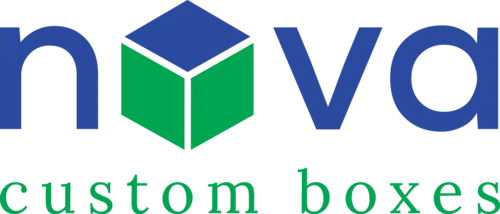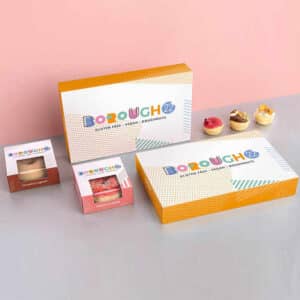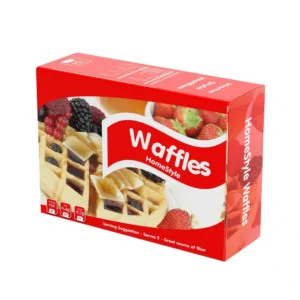Custom Food Boxes
Get A Free Quote
Printing and Packaging Support

Custom Food Boxes | Food Packaging Supplies Wholesale
Custom food boxes are specialized custom packaging designed for food products. They serve as a protective barrier for the food inside, keeping it fresh and safe for consumers.
Customized food boxes are usually made of materials like cardboard, paperboard, or plastic and can come in various shapes, sizes, and designs to suit different food products.
The importance of custom food boxes in the food industry cannot be overstated. In today’s fast-paced world, people demand convenience and quality in the food they consume.
Custom food packaging not only offers protection for the food but also helps create a brand image, providing a unique and attractive way for food companies to showcase their products.
The benefits of using customized box packaging are numerous. For example, custom food boxes can help increase food product shelf life, reducing food waste.
They can also improve the product’s visibility and make it more appealing to customers, leading to increased sales.
Custom boxes for food also allow food companies to directly communicate important information about the product, such as ingredients, nutrition information, and cooking instructions, to the customer.
Let’s dig into the world of custom food boxes.
Variety of Custom Food Packaging
Custom food packaging is a crucial aspect of the food industry. Companies can showcase their brand and products through various packaging options such as Candy Boxes, Coffee Boxes, Cookie Boxes, Cupcake Boxes, Donut Boxes, Macaron Boxes, Pastry Boxes, Pie Boxes, Popcorn Boxes, and Tea Boxes.
Each box can be customized to fit the specific needs of the food product, providing a unique and appealing presentation.
In addition, Custom Frozen Boxes and Fast Food Packaging are also available for businesses that sell frozen food products or offer takeout and delivery services.
These boxes are designed to keep the food fresh and protect it during transportation. With the right custom food packaging, businesses can increase brand awareness and improve customer satisfaction.
Types of Custom Food Boxes
Food packaging supplies are available in various materials, designs, and sizes, making them ideal for various applications. The five common types of custom food boxes are:
Corrugated Boxes
These are made from corrugated cardboard and are characterized by their fluted layers of paper that provide strength and cushioning.
They are lightweight, durable, and suitable for packaging heavy and delicate food items. Corrugated boxes are ideal for shipping, storage, and display and are commonly used for items such as fruits, vegetables, and baked goods.
Rigid Boxes
These boxes are made from sturdy materials designed to maintain their shape under pressure. They are commonly used for packaging luxury food items such as chocolates, confectionaries, and premium snacks.
Rigid boxes are available in various materials, including paperboard, cardboard, and even plastic, and can be customized with custom printing and finishing options.
Folding Cartons
These are made from thin, foldable materials such as paperboard and are characterized by the fold-up design that makes them easy to store and transport.
They are often used for packaging food items such as snacks, cereals, and granola bars and are ideal for products requiring minimal packaging. Folding cartons are also eco-friendly, using less material than other custom food boxes.
Paperboard Boxes
These are made from heavy-duty paperboard and are designed to withstand the rigors of shipping and handling. They are ideal for packaging heavier food items, such as packaged meals, and can be customized with features such as windows and handles.
Paperboard boxes are also popular for their eco-friendliness, as they are made from sustainable materials and can be recycled after use.
Designing Custom Food Boxes
Designing custom food boxes is crucial as it can help attract customers and create a memorable brand image. When designing custom food boxes, there are several factors to consider, including color, print, graphics, material selection, box size and shape, and sustainable customized box packaging.
It is important to decide on an optimal design that meets safety and branding standards. Factors to consider when designing custom food boxes include color, print, graphics, and material selection.
➢ Choosing the right combination can help create a unique look that stands out from the competition.
➢ Ensure the food product is safe in packaging while shipping or stocking by retailers.
➢ Culinary brands should also consider sustainable packaging solutions that minimize waste without compromising performance.
➢ To ensure your food packages deliver on their promise, choosing the right box size and shape must be considered; it’s best to follow industry guidelines for packaging printing and design techniques.
➢ Packaging supplies like inline-processed printing with safe food-grade inks will comply with FDA regulations while providing vibrant colors and visuals.
➢ Working with experienced custom food packaging box companies also allows businesses access to knowledgeable professionals who can advise on best practices when designing custom food boxes.
Printing Techniques for Custom Food Boxes
Several printing techniques are available for custom food boxes, including offset, digital, flexography, and screen printing. The printing technique should be based on cost, speed, and quality.
Flexography
Flexography, also known as flexo, is a printing process that uses flexible printing plates. Flexo printing is well-suited for printing on corrugated cardboard or other materials with uneven surfaces. The main advantage of flexo printing is that it is relatively fast and inexpensive.
Offset Lithography
Offset lithography, also known as offset printing, is a printing process that uses metal plates. Offset lithography is the most common type of commercial printing and is well-suited for large print runs. The main advantage of offset lithography is that it produces high-quality prints.
Gravure
Gravure, also known as rotogravure, is a printing process that uses engraved cylinders. Gravure printing is well-suited for large print runs and can produce high-quality prints. The main disadvantage of gravure printing is that it is relatively slow and expensive.
Screen Printing
It, also known as silk screening, is a printing process that uses a mesh screen to transfer ink onto a substrate. Screen printing is well-suited for prints with multiple colors or complex designs. The main disadvantage of screen printing is its relatively low print yield.
Digital Printing
Digital printing, also known as direct-to-substrate printing, is a printing process that uses digital files to create prints directly on the substrate. Digital printing is well-suited for small print runs and can be very cost-effective. The main disadvantage of digital printing is that it generally produces lower-quality prints than other methods, such as offset lithography or gravure.
Inkjet Printing
Inkjet printing, also known as drop-on-demand (DOD) printing, is a type of digital printing that uses inkjet heads to deposit ink onto the substrate. Inkjet printers are often used for short print runs and can be very cost-effective. The main disadvantage of inkjet printers is that they generally produce lower-quality prints than other methods, such as offset lithography or gravure.
Cost of Custom Food Boxes
The cost of custom take-out boxes varies based on several factors, including minimum order quantity, printing techniques, box size, and material. Choosing the right food packaging boxes is essential to provide the best quality boxes at an affordable price.
Minimum Order Quantity
The minimum order quantity required by the supplier is an important factor that affects the cost of custom food boxes. The MOQ is the minimum number of boxes ordered for the supplier to produce them. The higher the MOQ, the lower the cost per box on the bulk food boxes, but it also means a more significant upfront investment.
Printing Techniques
The food packaging printing techniques also affect the cost of custom food boxes. For example, digital printing is typically less expensive than offset printing, but it may provide a different level of detail and color accuracy.
Box Size and Material
The size of the custom food delivery boxes and the type of material used also impact the cost. Larger boxes or boxes made from higher quality materials, such as rigid boxes, are more expensive than smaller boxes or those made from simpler ones, such as corrugated boxes.
Frequently Asked Questions
Q: What materials can be used for food packaging?
We can use cardboard boxes for food packaging, including paperboard, corrugated cardboard, rigid cardboard, plastic, and aluminum.
Q: What are the four materials that modern food packaging is made from?
The four materials that modern food packaging is made from are
- Plastic
- Paper and Cardboard
- Metal
- Glass.
Q: What are the traditional methods of food packaging?
Traditional food packaging methods include using glass jars, metal cans, and paperboard boxes. These materials have been used for many years to preserve and protect food products, but with advancements in technology, there are now more options available for food packaging.
Q: What are the 4 types of packaging materials?
The 4 types of packaging materials are paperboard, corrugated cardboard, rigid cardboard, and plastic.
Q: What is primary packaging in the food industry?
Primary packaging in the food industry refers to the first layer of packaging that directly interacts with the food product. The packaging directly contacts the food item and is responsible for providing protection, preservation, and containment of the food product.
Conclusion
Custom food boxes are an essential aspect of the food industry as they help protect and preserve food items while also providing a marketing opportunity for food businesses. Whether you are looking for corrugated boxes, rigid boxes, folding cartons, or paperboard boxes, there is a custom food box to suit your needs.
When designing custom food packaging, it is important to consider factors such as color, print, graphics, material selection, box size and shape, and sustainable packaging. Finally, choose the right printing technique and supplier to ensure you receive the best quality custom food boxes at an affordable price.













